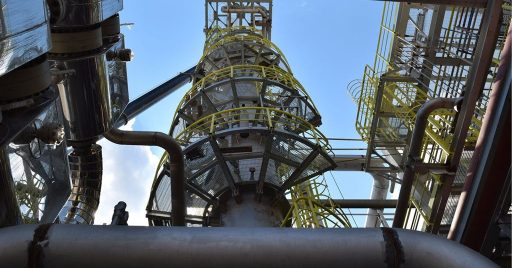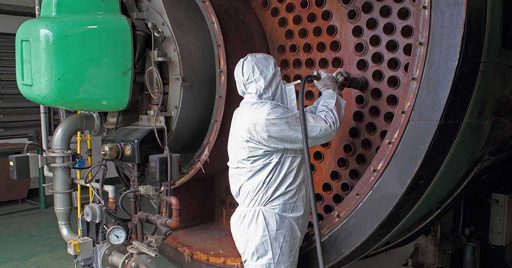Oil and petroleum refinery operations are associated with a spectrum of occupational health and safety hazards. From minor injury at one end of the scale to potentially more severe damage to health and even death at the other end. Those Hazards in oil and petroleum refineries must be carefully treated and always modified. Otherwise, they result in disasters.
On March 23, 2005, an explosion at BP refinery in Texas City killed 15 workers in one deadly accident. In this disaster, 180 workers were injured severely, and the company lost billions of dollars. This accident clearly shows how identify hazards in oil and petroleum refineries can be vital.
The earliest refinery opened two years after the first successful drilling of a commercial oil well in 1859 to produce kerosene from the crude. Since then, although energy and resources are the second biggest industry by revenue worldwide, and safety is their priority, oil and petroleum refineries are still among the deadliest jobs.
The obvious hazards in the oil refinery are chemicals and fire, and explosion, which we talk about them in the following.
Table of content
3 Common Hazards In Oil And Petroleum Refineries
Refineries, intricate industrial complexes vital to processing oil and petroleum, encompass a multitude of potential hazards. Throughout the years, various accidents have made headlines, underscoring the critical importance of safety measures within these facilities on a global scale.
In this article, we aim to shed light on three common hazards prevalent within oil and petroleum refineries. Moreover, we have also provided some tips to mitigate these risks.
Chemicals
The oil and petroleum refinery’s primary purpose is to change crude oil into different products. During this process, various chemicals get used, and thermal procedures are implemented. All those chemicals like ammonia, asbestos, benzene, hydrofluoric, and sulphuric acid have inherent hazards that can be dangerous in different ways. There are some chemicals and their dangers in the following table:
| Material | Process | Related health Hazards |
|---|---|---|
| Ammonia | -Thermal Cracking -Catalytic Cracking | It could cause dyspnea and problems on inhalation in addition to skin burns |
| Benzene | Catalytic Reforming | It affects the nervous system and causes respiratory symptoms |
| Carbon dioxide | -Amine Treatment -Saturated gas extraction -Hydrogen Production | It is brought out Headache, dizziness, paresthesia, malaise, and tachycardia. |
| Hydrofluoric acid | Alkylation | It could cause Bone changes, skin burns, respiratory tract damage. |
There are many other chemicals in oil refineries, such as asbestos, asphalt, carbon monoxide, caustic soda, chlorine, hydrogen sulphide, nitrogen, silica, and sulphur dioxide. Most of them are toxic for inhalation; therefore, wearing essential PPE is vital in oil and petroleum refineries.
Chemicals are one of the main hazards in oil and petroleum refineries that must be considered in the safety management system.

Fire and Explosion
Most fatal disasters in oil and petroleum refineries occur due to massive fire and explosion. Since almost all chemicals and products in refineries are highly flammable with low flash points, every oil refinery must design a fire and explosion protection system and operations. On the other hand, employers and EHS managers must consider an emergency plan for the refinery too.
Refinery fire and explosion systems must contain a permit system besides constant monitoring and safeguards. Operations and works in a plant need a permit since petroleum refineries have many complicated procedures and hazardous chemicals and materials, which no one can dominate all of them.
The use of matches, lighters, cigarettes, and other smoking material must be limited to certain areas. They could be easily a park in explosive material storage. Everyone must then be informed that even a flashlight camera could be a hazard in such a dangerous area.
Anyway, the first thing that every huge industry must consider is a risk assessment, and in oil refineries, it must be the priority for managers. The risk assessment provides enough information for managers to design a proper fire protection plan.
Maintenance
Many refineries’ accidents have occurred during a major shutdown or maintenance since these are a deviation from routine operations. Therefore, every maintenance needs careful planning, scheduling, and step-by-step procedures to ensure that accidental exposures do not occur.
For instance, in 1999, four workers were killed while replacing piping attached to a 150-foot-tall fractionator tower. During removal of the piping, naphtha was released onto the hot fractionator and ignited.
Even during minor maintenance, a disaster could happen; in 2016, 6 workers got seriously injured during little maintenance on a flammable isobutane line. The isobutane was released into the unit and ignited.
Hot works during maintenance are so dangerous and must be required permission and careful consideration. Since omitting hot works are almost impossible, there must be a precise plan for every hot work like welding or cutting.

Safety tips to mitigate hazards in oil and petroleum refineries
Consider the following considerations to avoid a disaster happening in your refinery:
- Provide proper personal protective equipment for your workers
- Install safety signs wherever it is essential
- Train all occupational health and safety to the workers
- Try new technology to prevent any accident from happens
- Always remember that safety costs are not a loss.